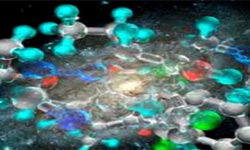Non-Cytotoxic Nanosilver Structures Bring New Hope for Curing Infections
Iranian researchers from Tehran University of Medical Sciences and Stanford University managed to completely eliminate the cytotoxicity of silver nanoparticles, bringing new hopes for curing infections.
They first coated silver oxide nanoparticles with a special polymer coating which tends to absorb silver ions and then applied a reducing reagent until a smooth core-shell configuration is achieved. The obtained nanostructure is nontoxic to human cells, in contrast to the conventional silver nanoparticles, and possesses a spectacularly enhanced antibacterial effect.

The unique antibacterial characteristic of silver nanoparticles has attracted a great deal of attention in medical and pharmaceutical applications. However, this promising advantage comes with two major shortcomings: the considerable cytotoxicity of silver nanoparticles on human cells and their inefficiency in fight against bacterial biofilms.
"The serious problem with utilization of silver nanoparticles, their cytotoxic activities, is totally overcome in our proposed nanomaterial. Additionally, the eradication of bacterial biofilms has been made possible," said Dr. Morteza Mahmoudi, the lead researcher and assistant professor of Nanotechnology Research Center, Faculty of Pharmacy, Tehran University of Medical Sciences.
"The present engineered multimodal nanoparticles can deeply penetrate into bacterial biofilms and destruct them thanks to their magnetic properties. The highly smooth surface of silver together with the altered composition of the involved corona protein avoids the accumulation of silver nanoparticles in cellular mitochondria. Hence, cytotoxicity is not a matter of concern for the proposed nanostructures," Dr. Mahmoudi added, appreciating his fellow colleague in the project, Dr. Vahid Serpoushan who is with the Stanford University School of Medicine.
Source: Nanotechnology Now
- 490 reads
Human Rights
Fostering a More Humane World: The 28th Eurasian Economic Summi

Conscience, Hope, and Action: Keys to Global Peace and Sustainability

Ringing FOWPAL’s Peace Bell for the World:Nobel Peace Prize Laureates’ Visions and Actions

Protecting the World’s Cultural Diversity for a Sustainable Future

Puppet Show I International Friendship Day 2020

